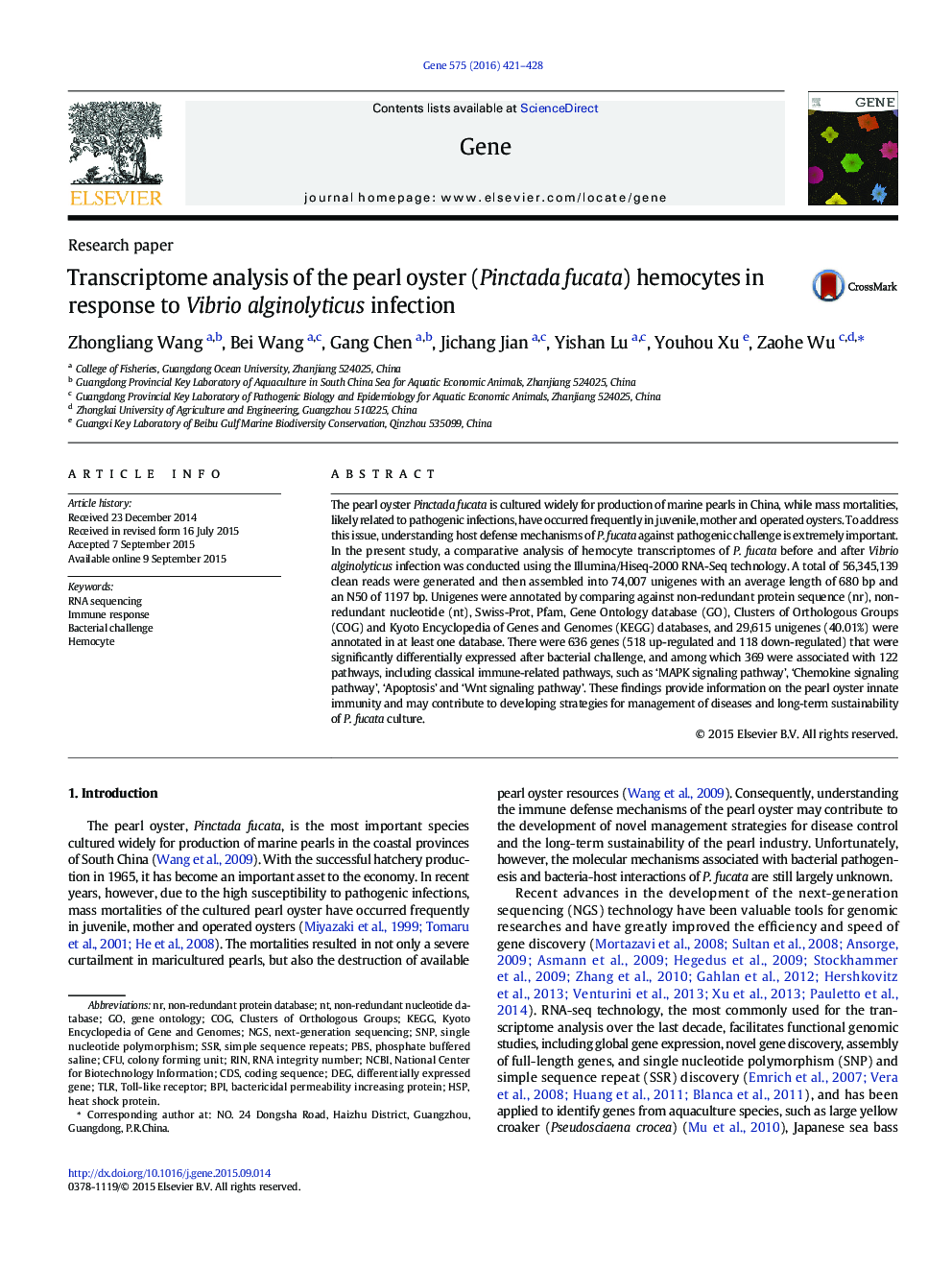| کد مقاله | کد نشریه | سال انتشار | مقاله انگلیسی | نسخه تمام متن |
|---|---|---|---|---|
| 2815482 | 1159873 | 2016 | 8 صفحه PDF | دانلود رایگان |

• Transcriptome analysis of Pinctada fucata in response to bacterial challenge
• 74,007 unigenes with an average length of 680 bp were generated after assembly.
• 636 genes were significantly differentially expressed after bacterial challenge.
• 464 DEGs had a GO ID and 369 DEGs had a KO ID.
• For better understanding of immune mechanism of P. fucata to bacterial infections.
The pearl oyster Pinctada fucata is cultured widely for production of marine pearls in China, while mass mortalities, likely related to pathogenic infections, have occurred frequently in juvenile, mother and operated oysters. To address this issue, understanding host defense mechanisms of P. fucata against pathogenic challenge is extremely important. In the present study, a comparative analysis of hemocyte transcriptomes of P. fucata before and after Vibrio alginolyticus infection was conducted using the Illumina/Hiseq-2000 RNA-Seq technology. A total of 56,345,139 clean reads were generated and then assembled into 74,007 unigenes with an average length of 680 bp and an N50 of 1197 bp. Unigenes were annotated by comparing against non-redundant protein sequence (nr), non-redundant nucleotide (nt), Swiss-Prot, Pfam, Gene Ontology database (GO), Clusters of Orthologous Groups (COG) and Kyoto Encyclopedia of Genes and Genomes (KEGG) databases, and 29,615 unigenes (40.01%) were annotated in at least one database. There were 636 genes (518 up-regulated and 118 down-regulated) that were significantly differentially expressed after bacterial challenge, and among which 369 were associated with 122 pathways, including classical immune-related pathways, such as ‘MAPK signaling pathway’, ‘Chemokine signaling pathway’, ‘Apoptosis’ and ‘Wnt signaling pathway’. These findings provide information on the pearl oyster innate immunity and may contribute to developing strategies for management of diseases and long-term sustainability of P. fucata culture.
Journal: Gene - Volume 575, Issue 2, Part 2, 10 January 2016, Pages 421–428